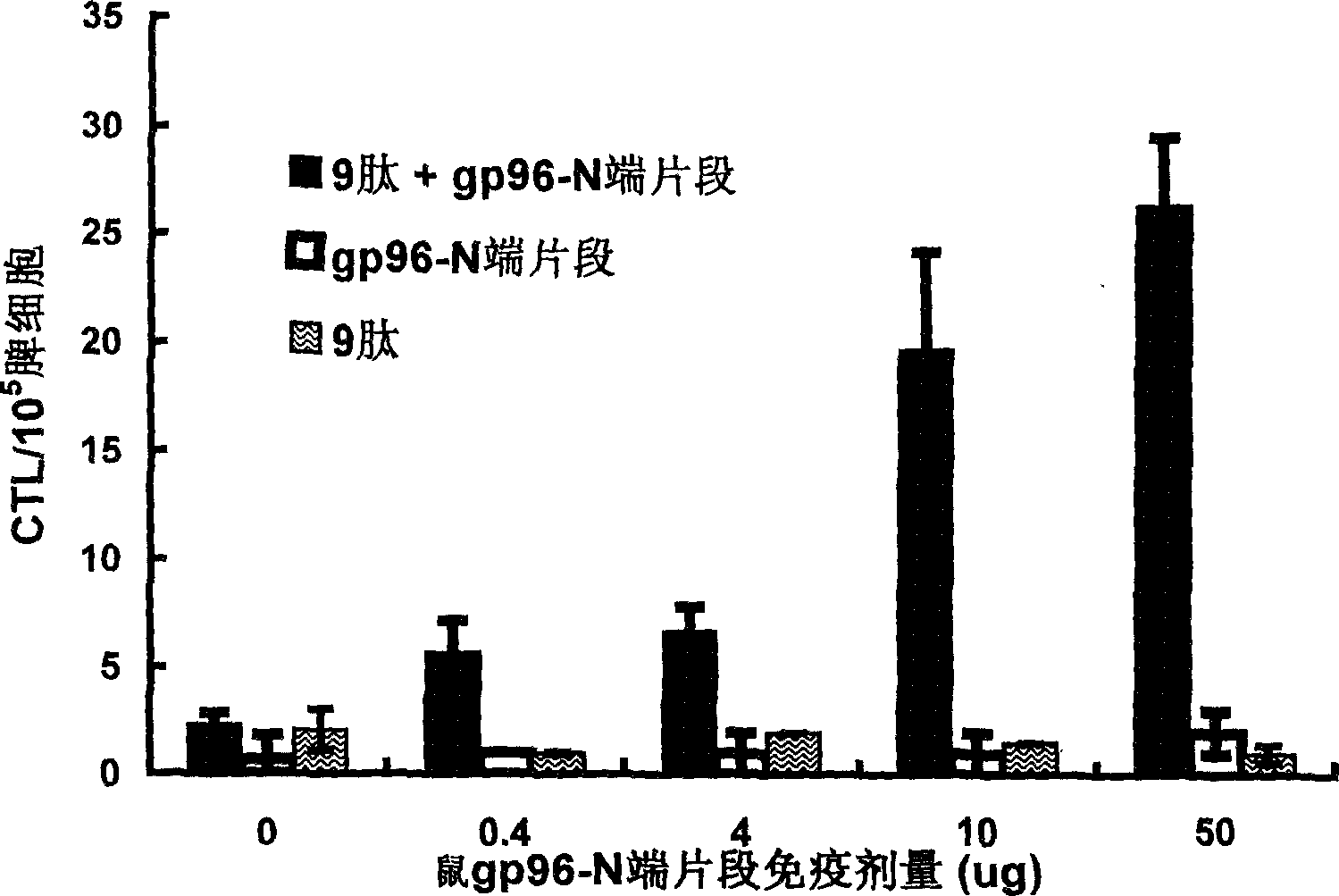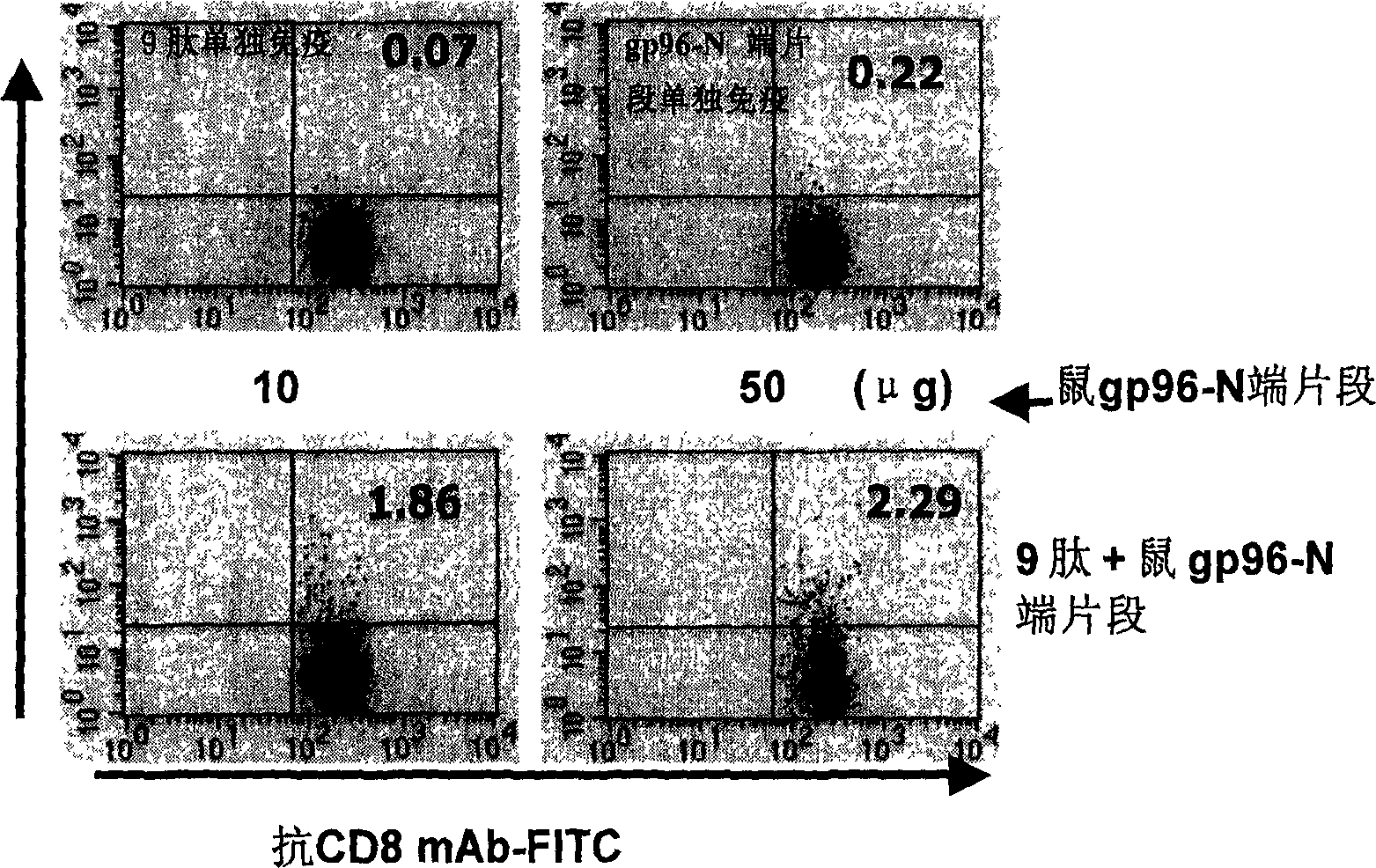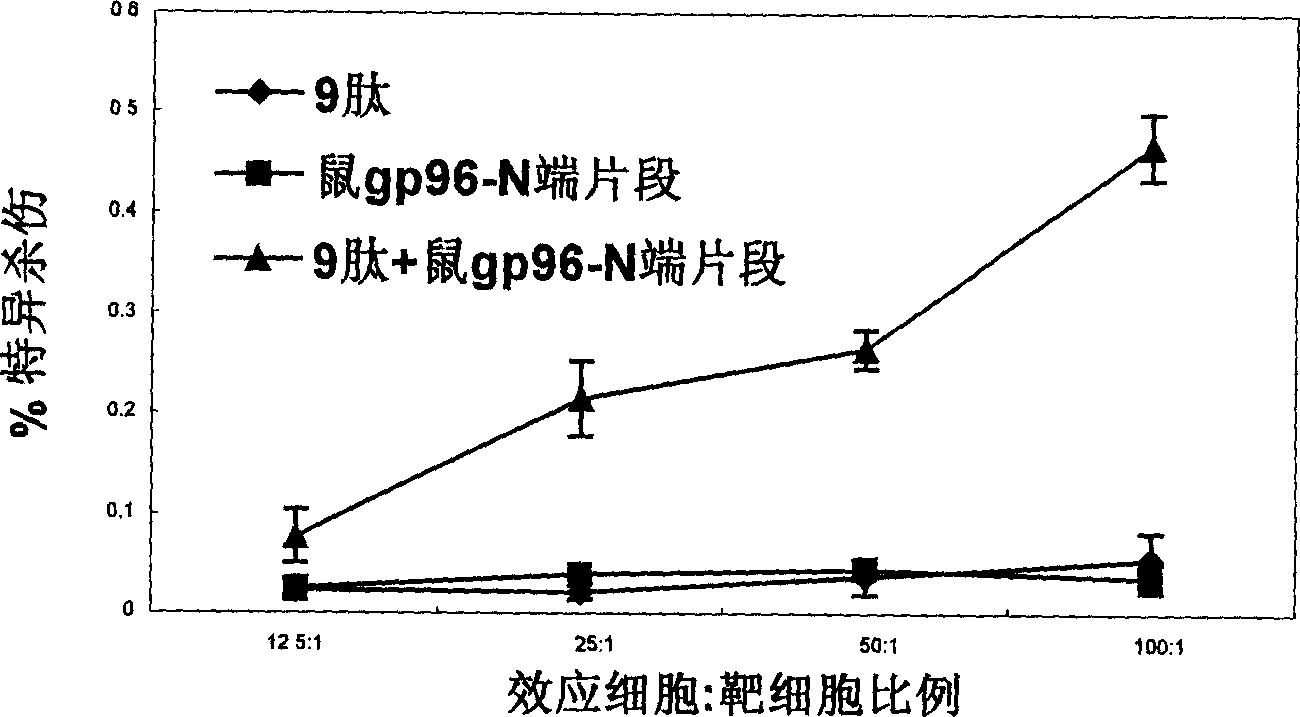Immunological adjuvant, and its application in preparing vaccine and medicine for anti-virus
An immune adjuvant and immune enhancement technology, applied in the field of immunology, can solve the problems of limited application, unstable adjuvant effect, inability to enhance cellular immune response, etc., to achieve the effect of treating diseases, improving antigen immune activity, and eliminating viruses
- Summary
- Abstract
- Description
- Claims
- Application Information
AI Technical Summary
Problems solved by technology
Method used
Image
Examples
Embodiment 1
[0019] In this embodiment, mice are used as animal models, and HBV, HCV, HIV-1, SARS-CoV, and FMDV are studied, and the same conclusion is obtained. Now take HBV as an example:
[0020] 1. Cloning of experimental animal mouse gp96-N22-355 gene fragment
[0021] PET-30a plasmid (from novagen), laboratory preserved mouse pET-30a-gp96 (gp96 see patent number: ZL 01 1 04060.2). N-terminal genes were cloned in plasmids. The primers used are:
[0022] Primer 1: 5′ CCGGATCCGAACTTGATGTGGATGGTACA 3′
[0023] Primer 2: 5′ CCGAGCTCCCAAATGGTGAGAGTATAATTTAC 3′
[0024] The PCR reaction conditions are as follows: 94°C for 4 minutes; 94°C for 50 seconds, 55°C for 50 seconds, 72°C for 3 minutes, a total of 30 cycles; 72°C for 5 minutes. It turned out to be identical to the known sequence.
[0025] The PCR product is a fragment of about 1Kd, and two restriction sites of BamHI and SacI are artificially introduced into the 5' end and 3' end of the fragment, and the amplified fragment is seq...
Embodiment 2
[0043] At the cellular level, human DC cells, which play an important role in the antigen presentation process, were used as materials to study the effects of different fragments of heat shock proteins Hgp96 and Hhsp70 on the activation of DC cells. HBV, HCV, HIV-1, SARS-CoV, and FMDV have been studied, and the same conclusion has been obtained. Taking HBV as an example:
[0044] 8. Purification of Hgp96 full-length protein from human liver tissue
[0045] 50 g of normal human liver tissue that died in a car accident was homogenized and centrifuged, and precipitated with 50%-70% (NH4)2SO4. After the precipitate was dissolved, ConA Sepharose (Pharmacia Company) was used for affinity chromatography, and the bound protein was purified with 10% (NH4)2SO4. α-methyl glucoside was eluted, and the eluate was subjected to anion chromatography on POROS20QE (BioCAD perfusion chromatography system of PE Company), and Hgp96 protein with >95% purity was obtained through these three steps of...
Embodiment 3
[0085] In this example, SPF chicken was used as an animal model, and Chsp108 N21-355 was used as an adjuvant to study MDV, AIV and NDV protein antigens, and the same conclusion was obtained. Now take MDV as an example:
[0086] 1. Chsp108 of the HSP90 family extracted from chicken liver and its gene sequence analysis
[0087] According to the above extraction method. Take 80 grams of healthy and chicken tumor liver tissues preserved at -70°C and chicken tumors caused by chicken Marek's virus (MDV) infection, add 4 times the volume of hypotonic buffer, and homogenize to more than 95% liver tissue in an ice bath with a homogenizer. The cells are broken. Centrifuge at 14,000 rpm for 30 minutes to remove cell debris and other impurities, and perform ultracentrifugation. The supernatant was precipitated with 50%-70% saturated ammonium sulfate, and after the precipitate was dissolved, it was passed through an affinity chromatography column, and the bound glycoprotein was eluted w...
PUM
| Property | Measurement | Unit |
|---|---|---|
| Molecular weight | aaaaa | aaaaa |
| Molecular weight | aaaaa | aaaaa |
Abstract
Description
Claims
Application Information
 Login to View More
Login to View More - R&D
- Intellectual Property
- Life Sciences
- Materials
- Tech Scout
- Unparalleled Data Quality
- Higher Quality Content
- 60% Fewer Hallucinations
Browse by: Latest US Patents, China's latest patents, Technical Efficacy Thesaurus, Application Domain, Technology Topic, Popular Technical Reports.
© 2025 PatSnap. All rights reserved.Legal|Privacy policy|Modern Slavery Act Transparency Statement|Sitemap|About US| Contact US: help@patsnap.com



